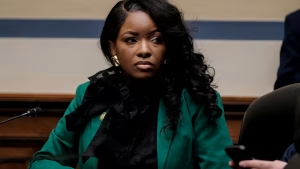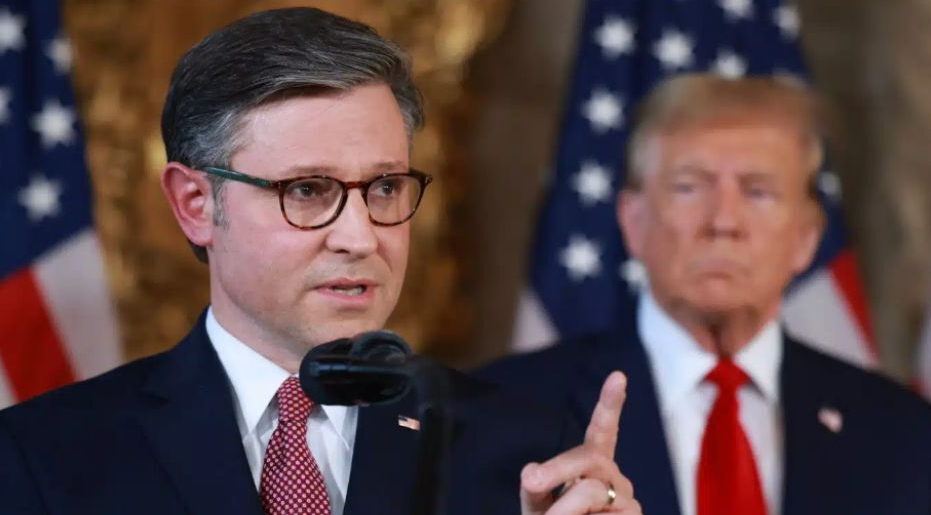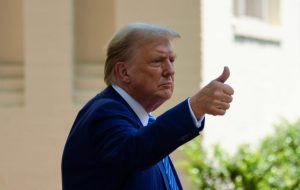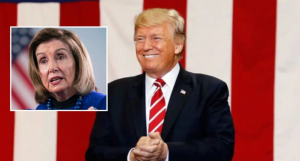Note: VIDEO at the end of the article.
In the face of sharp criticism from Sen. Rand Paul (R-KY), House Speaker Mike Johnson (R-LA) made a public defense of the fiscal strategy behind President Donald Trump’s proposed legislative package, dubbed the “One Big, Beautiful Bill.” Appearing on Fox News Sunday, Johnson addressed concerns over spending cuts, debt ceiling negotiations, and the long-term vision for fiscal discipline in Washington.
Paul had appeared just moments earlier on the same program, calling the House-passed version of the bill “wimpy and anemic” in its approach to cutting government spending. He expressed alarm that it would add to the national debt without sufficient safeguards. The senator also warned of broader national security risks stemming from unsustainable debt accumulation.
Speaker Johnson offered a calm but firm rebuttal.
“I agree wholeheartedly with Rand that the national debt is one of the most serious threats to our country,” Johnson said. “But where we differ is in strategy. This bill is a meaningful step forward, not a final solution.”
A Pragmatic Approach to Reform
While Johnson did not repeat previously unverified claims about the scale of spending cuts, he emphasized that the bill marks the beginning of a multi-step process toward more sustainable federal budgeting. He described the legislation as part of a “course correction,” aimed at balancing long-term priorities while avoiding fiscal chaos in the short term.
“This is not about turning everything around overnight,” Johnson explained. “It took decades of irresponsible spending to get here, and we’re not going to fix it in one vote. But this bill shows we’re serious.”
Key components of the bill include provisions to streamline government programs, reduce unnecessary discretionary spending, and introduce more robust oversight mechanisms. While the specifics remain under review by the Congressional Budget Office (CBO), the bill signals a broader Republican effort to shift the conversation from unlimited federal spending to responsible governance.
Debt Ceiling Debate: A Familiar Flashpoint
A central point of contention is the bill’s inclusion of an extension to the federal debt ceiling. Paul criticized this provision as capitulation to the status quo, arguing that it enables future spending without strong enough constraints.
Johnson responded by emphasizing a crucial distinction: extending the debt ceiling does not equate to authorizing new spending. Rather, it allows the federal government to meet existing obligations that Congress has already legislated.
“If we don’t raise the debt ceiling, we risk defaulting on our obligations,” Johnson said. “That would damage the credit of the United States, shake investor confidence, and hurt Americans in very real ways—from higher interest rates to delayed federal payments.”
He added that fiscal conservatives in the House insisted on pairing any debt ceiling increase with serious efforts toward spending restraint—an effort Johnson claims is reflected in the bill.
Trump’s Role and GOP Unity
Johnson also addressed Trump’s role in crafting and backing the legislation. While Trump has not issued a formal statement detailing his fiscal policy preferences for this bill, he has expressed general support for spending cuts and reducing waste.
“President Trump is engaged and understands the urgency of this moment,” Johnson said. “He knows that sending a strong signal to creditors and markets is essential.”
According to Johnson, the bill reflects priorities that many in the Republican Party—across both chambers—agree on: restraining spending growth, safeguarding the U.S. credit rating, and avoiding self-inflicted economic crises through debt ceiling standoffs.
The House passed the bill along party lines, and Johnson is now working to secure enough support in the Senate, where Paul and a handful of other GOP fiscal hawks remain hesitant.
Johnson’s Long-Term Strategy
To illustrate the scale and complexity of the national debt challenge, Johnson invoked a naval metaphor:
“Turning the U.S. fiscal ship is like steering an aircraft carrier. You can’t do it on a dime. You need space, time, and coordination.”
He acknowledged that many Americans—on both sides of the aisle—are frustrated with Congress’s inability to balance the budget. Johnson insisted that this bill is an early but essential course correction.
“This is not the end,” he said. “It’s the beginning of a new approach.”
Political and Public Response
Public response to the bill has been mixed. Fiscal watchdog groups have called for more aggressive action on entitlement reform, which remains untouched in this legislation. Meanwhile, some Democrats have criticized the process as partisan and opaque, especially given that the bill was advanced through budget reconciliation—a strategy that limits debate and bypasses the filibuster in the Senate.
Outside of Washington, some economists have praised the debt ceiling provision as necessary for maintaining U.S. creditworthiness, even as they caution that long-term spending discipline will require more than discretionary cuts.
Others have pointed out that without clear caps on future spending or revenue offsets, even modest cuts today could be outweighed by future obligations if left unaddressed.
Still, Johnson emphasized that this bill is meant to begin a more accountable fiscal process, not solve everything at once.
What Comes Next?
As the bill heads to the Senate, its fate remains uncertain. Sen. Paul and other Republicans are demanding deeper cuts, while Senate Democrats appear unwilling to support any measure that pairs a debt ceiling extension with significant reductions in domestic programs.
A CBO score is expected in the coming days, which will offer the most detailed look yet at the bill’s projected fiscal impact. That analysis will likely play a key role in shaping final negotiations.
For now, Johnson remains confident that the bill’s message—both to Americans and to global markets—is clear:
“We are not ignoring the debt anymore. We are acting.”
🧾 Fact Check: Key Claims from the Discussion
| Claim | Verdict | Explanation |
|---|---|---|
| “Extending the debt ceiling does not mean spending more money.” | ✅ True | The debt ceiling allows the government to pay existing obligations. It does not authorize new spending. |
| “This is a serious first step toward reducing the debt.” | 🟡 Opinion | This is a subjective assessment. While the bill introduces restraint, its long-term impact depends on future legislative follow-through. |
| “Trump is engaged and aligned on this bill.” | 🟡 Unconfirmed | Trump has not issued a public statement specifying support for this bill’s provisions. Johnson’s statement reflects internal GOP communication. |
| “We risk default if we don’t raise the debt ceiling.” | ✅ True | Failing to raise the debt ceiling would prevent the Treasury from meeting obligations, risking default. |
| “This is not the biggest cut in 30 years.” | ✅ True | Johnson did not repeat this unverified claim in the revised remarks. Past claims of a $1.5 trillion cut have not been confirmed by the CBO. |
| “Rand Paul and Johnson both agree the debt is a national security issue.” | ✅ True | Both lawmakers have publicly stated this view. It is a common position among fiscal conservatives. |
Final Word:
Speaker Mike Johnson’s defense of Trump’s “One Big, Beautiful Bill” represents a carefully calibrated effort to signal fiscal responsibility while avoiding an economic crisis. While disagreements persist within the GOP and among Democrats, the coming days—particularly the CBO report—will determine whether this bill gains broader traction or undergoes further revision.
PLAY:









